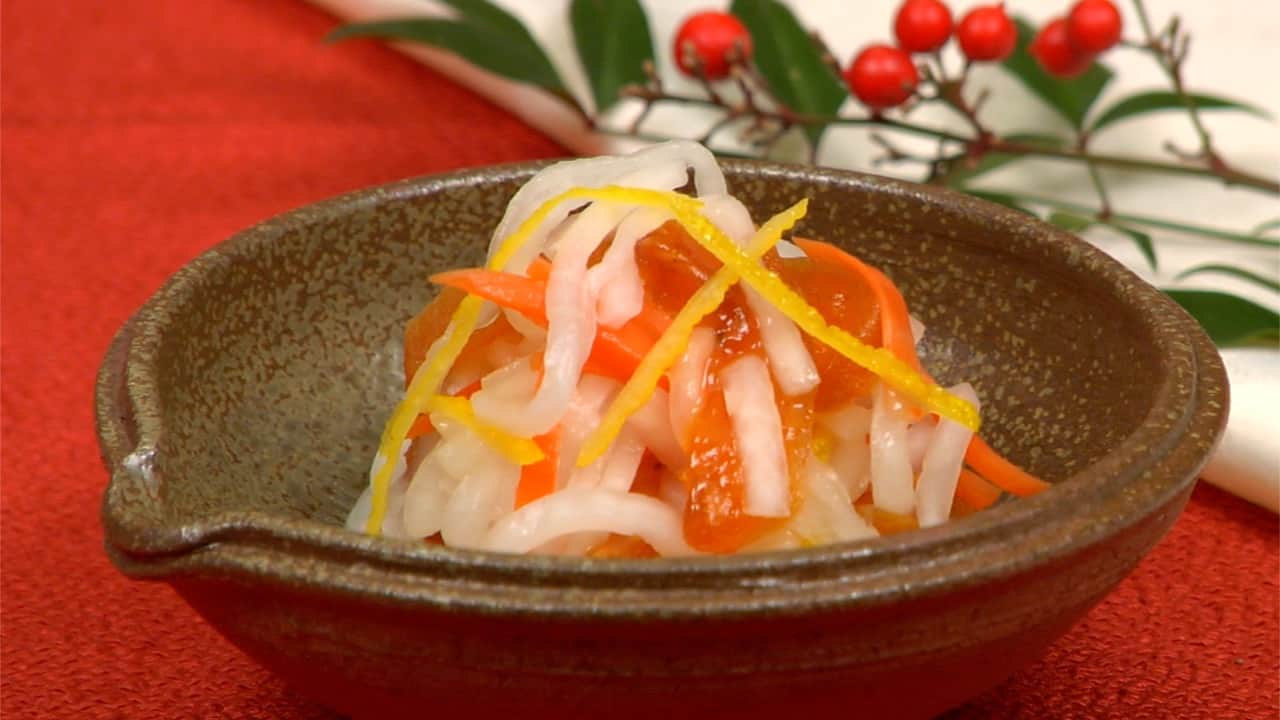

Ein New Kochbuch, Marx Rumpolt, 1581
Pickling is a form of fermentation that includes placing food into an acid, for example, sour wine (vinegar) or beer to preserve it. The use of vinegar is ancient, it is mentioned numerous times in the bible, and traces of vinegar were found in Egyptian urns (3000 B.C.). When mixed with water, it was known as posca or poor man's wine in ancient Rome.
How does vinegar preserve food?
Vinegar contains acetic acid, which is known to have antibacterial and antifungal properties which inhibit the growth of microorganisms that would spoil food.
What kinds of acids are found in wine?
Wine has tartaric, malic, and citric acids.
Tartaric acid lowers the PH level of food to a level that bacteria cannot live. It also acts as a firming agent and adds a tart flavor to wine and food.
Both malic and citric acids inhibit the growth of bacteria, fungi, mold, and yeast while helping food retain its color, flavor, and texture.
Original Recipe
3. Rote Ruben eyngemacht mit klein geschnittenen Merrettich/ Aniß/
Coriander/ vnd ein wenig Kuͤmel/ sonderlich wenn die Ruben geschnitten/
gesotten mit halb Wein vnd halb Essig.
Interpretation
3. Red turnips made with chopped horseradish/ anise/
coriander/ and a little cumin/ especially when the beets are cut/
boiled with half wine and half vinegar.
Ingredients
3 whole fresh baby beets
1/2 C red wine
1 C vinegar
1 piece horseradish root 1" long x 1" wide, slivered
1 t anise seed
2 t coriander seed
1/2 t caraway seed
Instructions
1. You can use canned beats if you want, but, fresh beets will give you a better flavor and texture. Roast your beets in a 400-degree oven for about 45 minutes to an hour.
2. Allow to cool and remove the skin. Chop your beets into bite-sized pieces and place them into pint-sized canning jars that are extremely clean! Add slivered horseradish.
3. Bring wine, vinegar, and spices to a boil. Pour into your jars, leaving a half inch of headspace before sealing the lids. Allow the beets, spices, and horseradish to cool to room temperature before storing.
Note: The beets store well in the refrigerator. If I were planning on long-term storage, I would finish with a hot water bath, but I am unsure if it would be necessary. I have one jar left of these beets from the event in the fridge and it is still good after several months.
Note: These should marinate for several days before being served. I prefer at least a week to marry the flavors. I have noticed that the flavors are not as pungent now as they were a week after being made. They've mellowed in a very pleasant way the longer they have sat.
Thoughts
I love pickled beets and I would have no difficulty bringing them to a weekend event along with the pickled onions if I were planning on not having a cooler. These are spicy, tart, and delicious. If you don't care for horseradish, don't use it, but do add the spices.
Sources
"A Short History Of Vinegar". Womersley Foods, 2022, https://womersleyfoods.com/pages/a-short-history-of-vinegar. Accessed 4 Oct 2022.
"Citric Acid: Structure, Uses, Intolerance, And More". Medicalnewstoday.Com, 2022, https://www.medicalnewstoday.com/articles/citric-acid#uses. Accessed 4 Oct 2022.
"Deutsches Textarchiv – Rumpolt, Marx: Ein New Kochbuch. Frankfurt (Main), 1581.". Deutschestextarchiv.De, 2022, https://www.deutschestextarchiv.de/book/view/rumpolt_kochbuch_1581/?p=418&hl=Rote. Accessed 4 Oct 2022.
(FSU), Food. "Significance Of Tartaric Acid". Food Science Universe (FSU), 2020, https://foodscienceuniverse.com/significance-of-tartaric-acid/. Accessed 4 Oct 2022.
Palmer, Sharon. "Ein New Kochbuch". Academia.Edu, 2022, https://www.academia.edu/6272538/Ein_New_Kochbuch. Accessed 4 Oct 2022.













